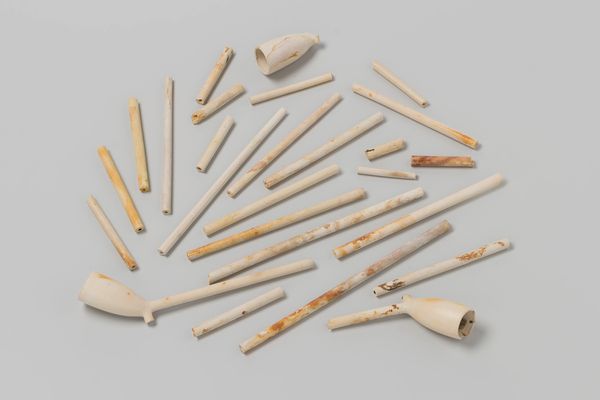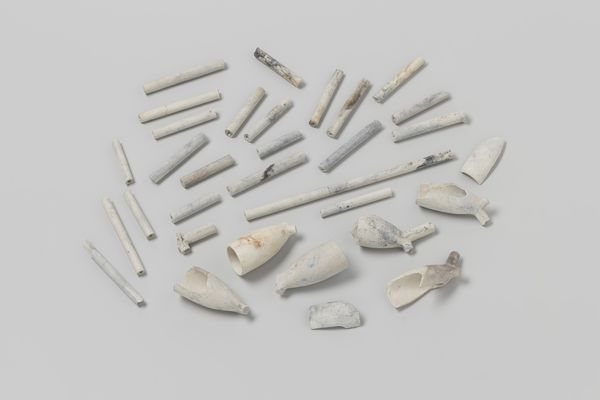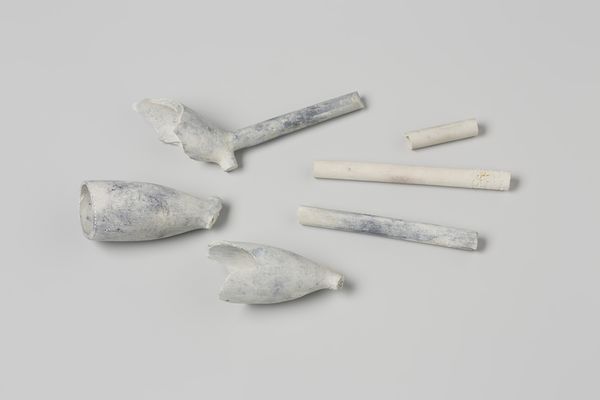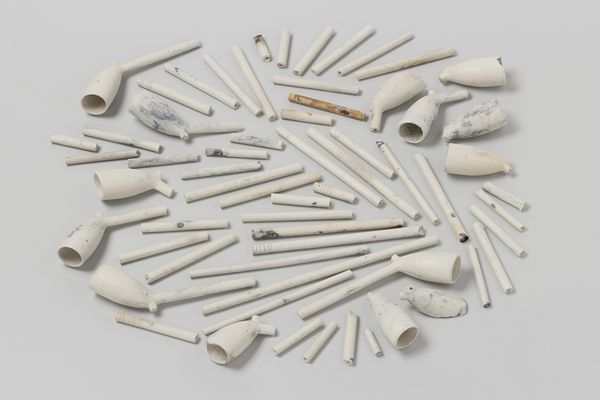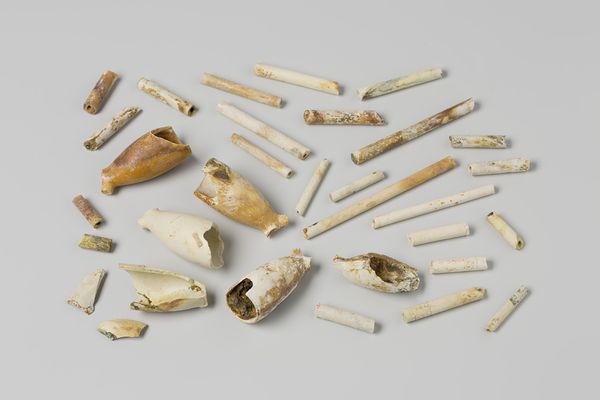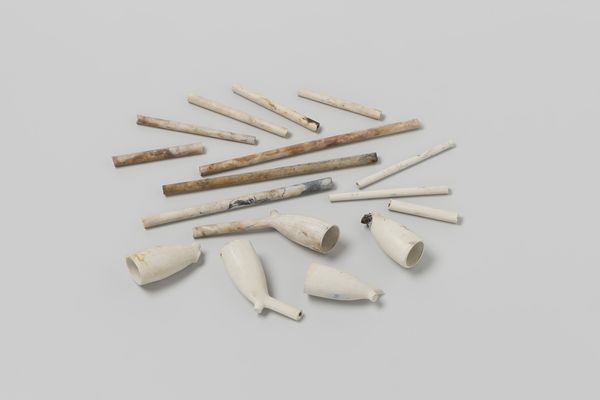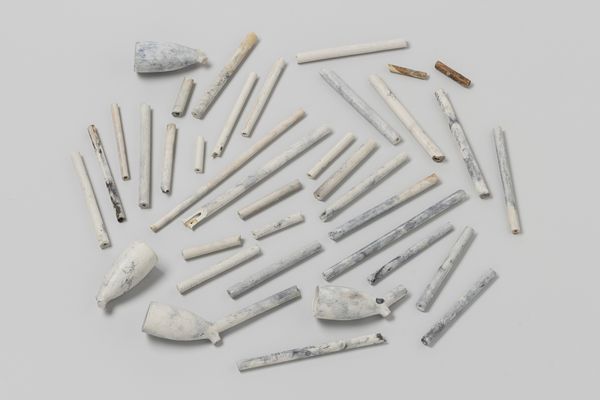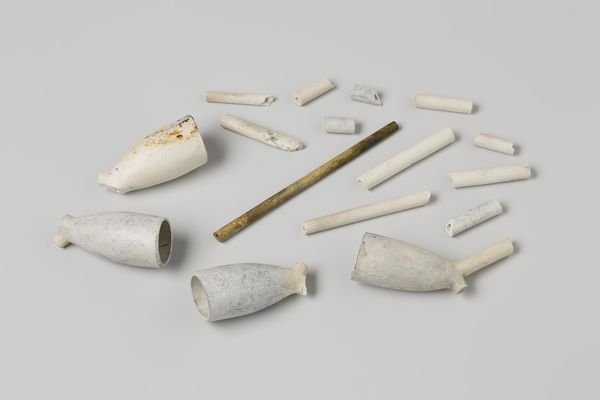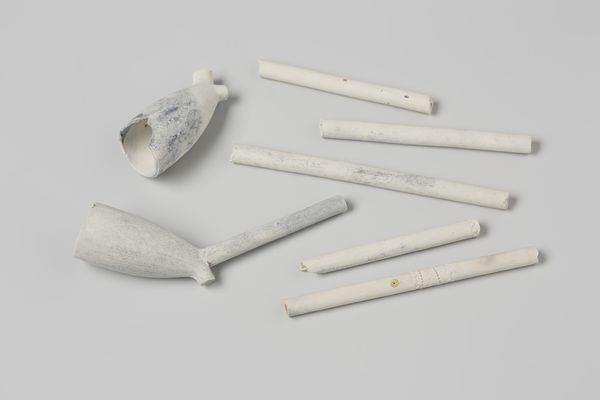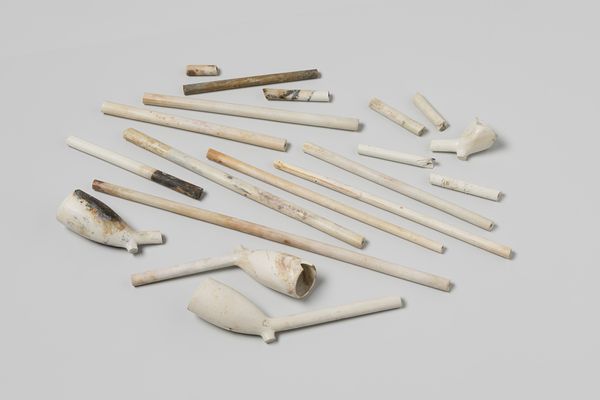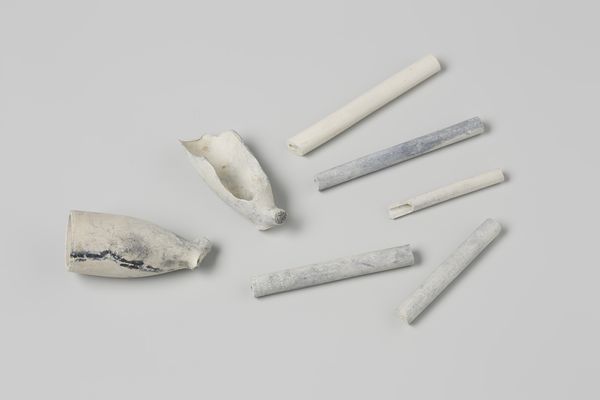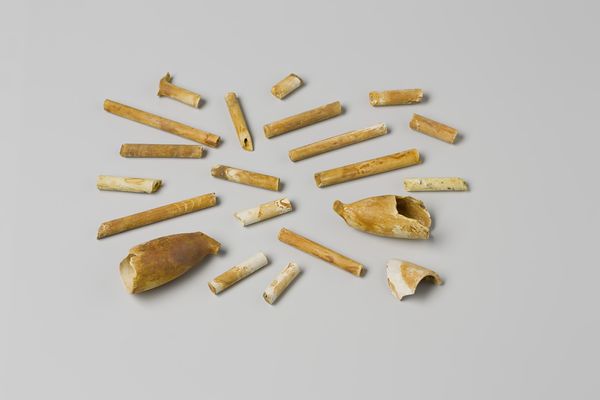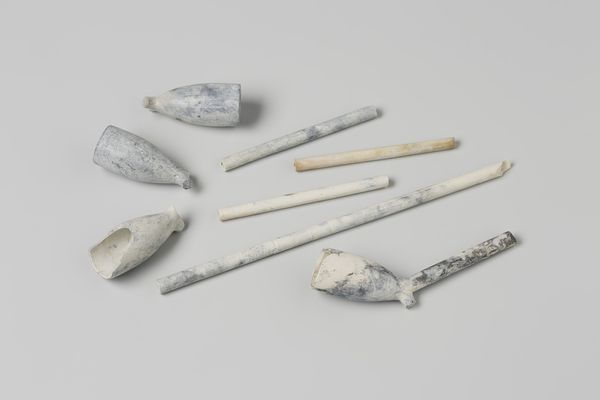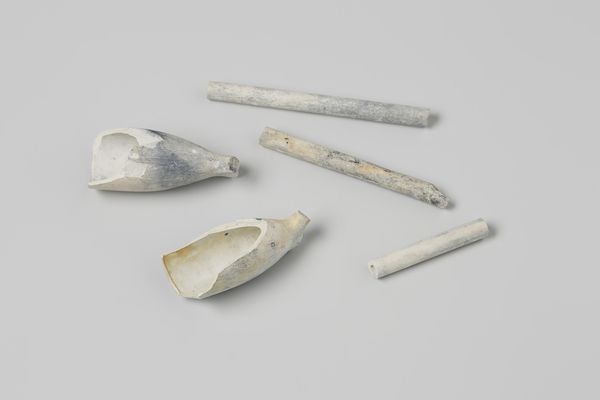
Fragmenten van pijpenkoppen en pijpenstelen uit het wrak van de Oost-Indiëvaarder 't Vliegend Hart Possibly 1710 - 1735
0:00
0:00
ceramic, earthenware
#
ceramic
#
earthenware
#
stoneware
#
ceramic
Dimensions: length 7 cm, width 3.1 cm, depth 1.7 cm, length 2.2 cm, diameter 0.6 cm
Copyright: Rijks Museum: Open Domain
Curator: So, here we have a collection, almost an accidental still life, of ceramic pipe fragments dating probably from 1710 to 1735. They’re shards from the wreckage of the Dutch East India Company ship, 't Vliegend Hart. Editor: My first impression? Haunted! Each fragment holds a ghost, a whisper of sea voyages, tobacco smoke, and the quiet anxieties of sailors long gone. Curator: Absolutely. Imagine these pipes being fashioned from earthenware or maybe stoneware, likely crafted somewhere in Europe. They would have been mass produced for everyday use. Now they are lying on the sea bed. Editor: I’m immediately thinking of the hands that shaped these pipes, the clay under fingernails. We're looking at raw material culture; pieces created from labor now lying as ruins on display. The smoke they once carried links to rituals—of relaxation, anxiety, connection in the claustrophobia of shipboard life. Curator: Precisely. The very act of making these pipes, then smoking them on a ship destined for the East, tells a story about global trade, of consumerism, even back then. But also about individual moments of solace amidst all that turmoil. Editor: Look at the discoloration, though. The yellowed stains, the faded remnants of paint or glaze; these are not pristine objects. This is ceramic undergoing radical transformation. What exactly *did* the ocean do to these simple things? I keep seeing time imprinted in their surfaces. Curator: Time, pressure, salt...it's fascinating isn't it? Think about the social context - tobacco was pretty expensive at this time and these pipes may show hierarchies within the ship, or the smoking rituals might represent certain ranks and communities on board. The pipes might carry information about these lost individuals. Editor: Right? Beyond a glimpse into maritime industry, these pieces, pulled from the wreck, suggest we are dealing with an archive, one where pipes smoked across continents serve as both subject and artifact. Curator: So when you look at it, what started off as perhaps everyday items, when seen through a modern eye, become quite evocative objects. It’s easy to weave our own stories around them, almost. Editor: Absolutely. I now want to take each individual fragment, hold it in my hand, and whisper: “Tell me everything.”
Comments
No comments
Be the first to comment and join the conversation on the ultimate creative platform.
